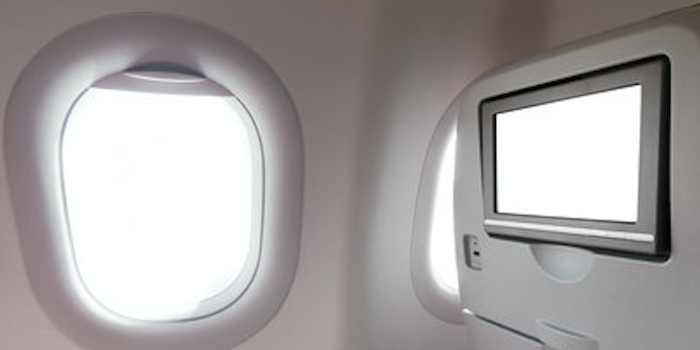One of the most recent innovations in the aerospace sector is a technology that’s ultimately invisible. Developments in the industry have resulted in advanced film and coating solutions that protect surfaces and parts inside the aircraft. Engineered to be lightweight, easy to clean and durable, films prevent scuffs, mild damage and are flame resistant. Specialty films are utilized in the aerospace industry to protect windows, expedite cleaning of lavatories, preserve overhead bins and more.
A passenger may look around the inside of a commercial aircraft and see the basics: seats, controls, windows. But a well-engineered aircraft has a feature that’s not obvious at first glance: layers of specialty film applied to surfaces throughout the aircraft to improve its safety, speed and comfort.
By utilizing trends in the aerospace industry, aircrafts can be engineered more effectively and perform well longer.
Learning from other industries
Innovation drives business, and manufacturing is no exception. By studying the trends and successes of other industries, aircraft manufacturers get a leg up on the competition. The film industry is venturing into new uses for film that include advances in raw materials, nanotechnology and antimicrobial materials.
Adding longevity
Since aerospace companies invest billions of dollars in equipment, the ability to reuse parts of an aircraft is extremely important. Government entities and corporations won’t funnel money into new airplanes and aircraft if older ones can be retrofitted at a lower cost. Products like protective films add to the longevity of older planes by keeping overhead bins and first and business class monuments in better condition. With continual research going into the fluoropolymer chemistries in these films, a better track record of longevity is predicted. Films are a major asset for organizations wishing to repurpose older planes or parts, and that, in turn protects their original investment. By preserving and updating older aircraft with films, manufacturers can save money and be more prepared for changing tides economically.

Tariffs
One major tide the economy faces are ever-changing tariffs imposed by foreign and domestic governments. Manufacturers and OEMs need to pay close attention to tariffs in the industry to ensure long-term contracts are not at stake. With such high safety precautions, the aerospace industry goes through multiple tariff and regulation changes year over year. Earlier in the year, the USA announced a 25% tariff on steel imports, and a 10% tariff on aluminum imports from Canada, Mexico and the European Union. These tariffs have major implications for the aerospace industry and impact both their current and future contracts. If companies order parts on an “as-needed” basis rather than planning ahead, they’re in jeopardy of falling far behind and being forced into buying parts at a higher rate. To prevent unexpected costs, planning and diligent research are a must.
Improved chemistry
By adapting improved chemistry for aircraft solutions, aerospace businesses have succeeded in showcasing product trends throughout aircraft interiors, like the application of specialty films. Most of the materials that have been used in the commercial airline industry have been in place for 20 or more years. There have been great advances in chemistry, materials, and manufacturing capability that can be used to design next-generation films for the aerospace industry.
Aircraft and airplanes are engineered to an exact level of specificity. For a safe take-off, flight and landing, the vessels require precision. One huge factor in the aerospace industry is the weight of an aircraft. An aircraft will not take-off if it is too heavy on the ground. Films applied to the interior of an aircraft can dramatically reduce its overall weight. Older decorative laminate panels could have over six different films laminated together. With new technologies and approaches, manufacturers can reduce that to three layers, while still having the same functionality and drastically reducing cost and weight.

The addition of specialty films within aircraft has proven to be a lesser known element that can be crucial to the continued success of safe and efficient rides. Without film, airplanes and aircraft need to be replaced more often. This adds costs and time in manufacturing. In an industry defined by innovation in engineering, specialty films fill a design niche for protecting surfaces and elevating safety.
 Steven Sorrentino is director of specialty films for Madico, Inc. His background in technology and operations makes him skilled at identifying new business development openings and developing innovative solutions that meet market needs. Sorrentino holds a BS in physics from the University of Massachusetts Dartmouth, a High-Tech MBA from Northeastern University, and a Lean Six Sigma Black Belt from SUNY Buffalo. He can be reached at ssorrentino@madico.com. To learn more about Madico’s aerospace films visit here.
Steven Sorrentino is director of specialty films for Madico, Inc. His background in technology and operations makes him skilled at identifying new business development openings and developing innovative solutions that meet market needs. Sorrentino holds a BS in physics from the University of Massachusetts Dartmouth, a High-Tech MBA from Northeastern University, and a Lean Six Sigma Black Belt from SUNY Buffalo. He can be reached at ssorrentino@madico.com. To learn more about Madico’s aerospace films visit here.





